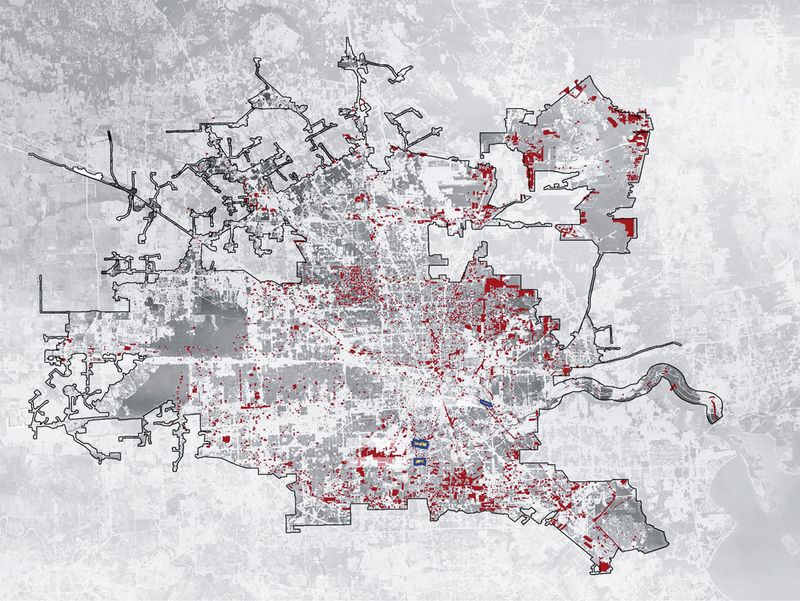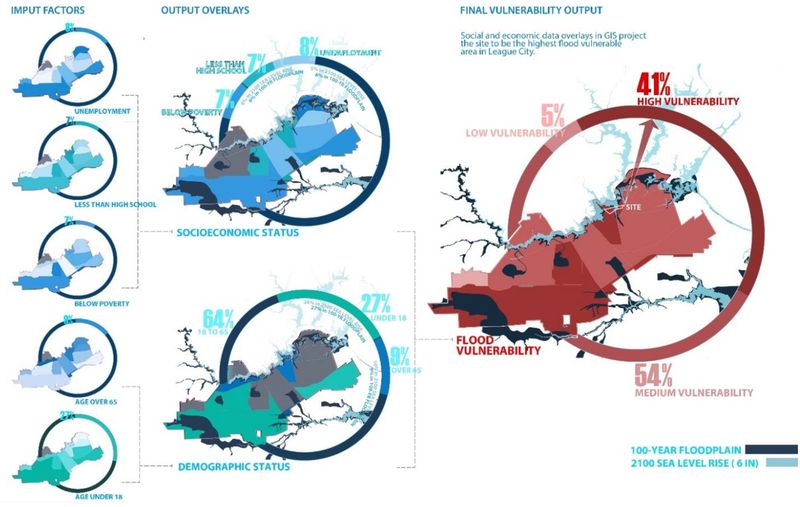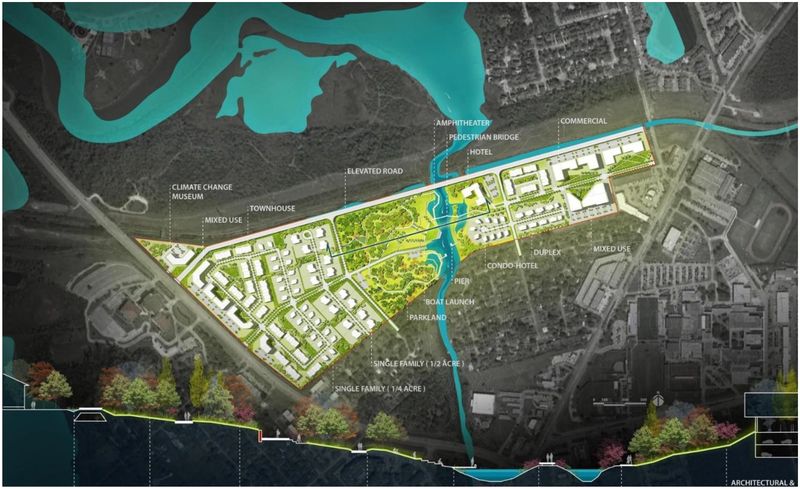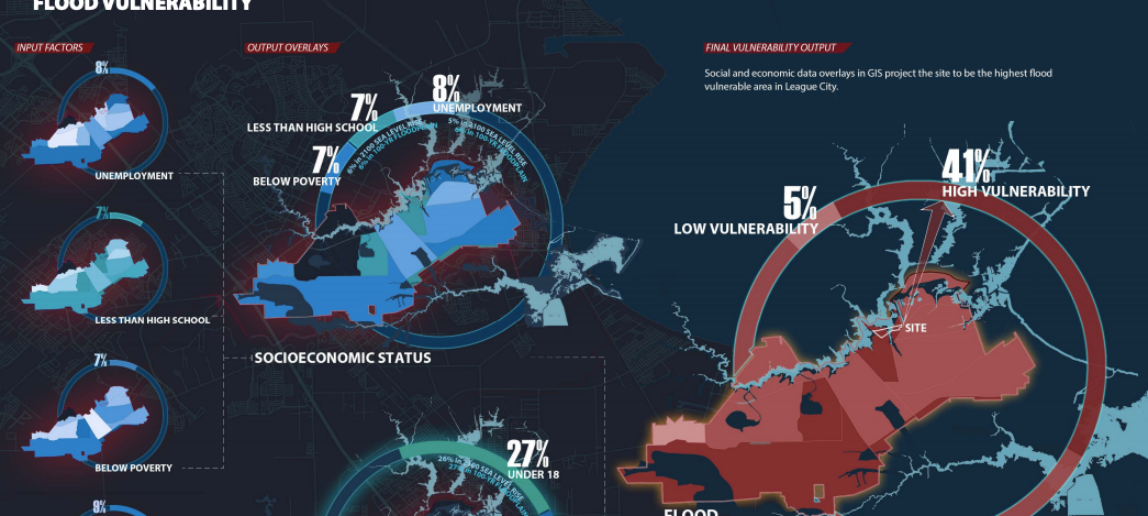Center for Housing and Urban Development projects earn research honors
Two projects that aim to protect vulnerable populations and underserved communities by mitigating flood risk and sea level-rise concerns recently earned the Texas A&M Center for Housing and Urban Development (CHUD) and its director Galen Newman honors for research excellence from the Environmental Design Research Association.
One of these projects focuses on smart flood solutions for empty urban spaces, especially those in underserved, marginalized communities.
Newman said vacancies within communities tend to increase substantially when floods strike, leaving them “ecologically and socially fragmented.” These communities, often with minority-dominant, low-income populations, often struggle to bear the costs of flooding.

Using Green Infrastructure
To combat this reality, Newman’s research investigates the value of investing in green infrastructure, which solves urban and climatic challenges by building with nature, for these empty spaces to alleviate costs to the community in the long run.
The results of this study indicate that the benefits of this proposed practice heavily outweigh the costs of construction and maintenance in the long term. The team found that, through the use of green infrastructure, land regeneration and storm water retention increased significantly, thereby restoring and protecting the community.
These outcomes signify the value of applying this prototype across similarly flood-prone communities in the future, both in Texas and beyond.
Master Planning in League City for Flood Vulnerability
The second project investigates projected flood and sea-level-rise vulnerability in League City, Texas, as well as highlights a master plan to improve the resilience of the community.
According to The National Oceanic Atmospheric Administration, the sea level in the Gulf Coast is expected to rise by six feet by the year 2100. In addition to causing ecological damage like wetland loss, sea level rise also increases the frequency of flooding in coastal cities – an imminent threat to those that live within them.

Working in conjunction with city officials, Newman and his team designed and implemented a new Geodesign process, a tool used to identify optimal design decisions for a given geographical space, to assess and prevent damage from this impending change. What sets Newman’s process apart is the integration of new, previously separate methods of projection, like the resilience scorecard.
By studying the city’s vulnerabilities through this innovative process, the team was able to create a plan for future city development, including location and flood mitigation design suggestions. These suggestions and projections, if applied, would serve to protect future residents from flood-related risks and create significant economic and ecological benefits for League City.

Certificates of Research Excellence are presented to impactful, practice-based research that encourages valuable practice in environmental design, furthering the organization’s pursuit of innovation and collaboration in design thinking. Both of CHUD’s research projects were recognized as such, honored by the Environmental Design Research Association alongside four other industry thought leaders.
The Center for Housing and Urban Development, located within in the Texas A&M College of Architecture, is a research hub for “green” housing and communities that feature vibrant economies, offer a choice of housing and transportation modes, and are close to jobs, schools, shopping, and recreation.
As an associate professor in Texas A&M’s Department of Landscape Architecture and Urban Planning and the center’s director, Newman studies the reuse of vacant properties in cities, land use science, spatial analytics, and community flood resilience.
Both CORE recipient projects are products of collaboration between Newman and other scholars working within the Center for Housing and Urban Development. Rui Zhu, Dingding Ren, Dongying Li, Jennifer Horney, Katie Kirsch, Garett Sansom, and Charles X White worked alongside Newman on “Resilience through Regeneration: The Economics of Repurposing Vacant Land with Green Infrastructure”. Additionally, Newman’s research into “Integrating a Resilience Scorecard and Landscape Performance into a Geodesign Process” was conducted in collaboration with Zixu Qiao, Matthew Malecha, Siyu Yu, Susan Puumala, Jennifer Horney, Jaekyung Lee, Youjung Kim, RyunJung Lee, and Phil Berke.
For more information, contact rnira@arch.tamu.edu or doswald@tamu.edu.


